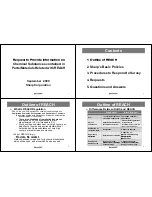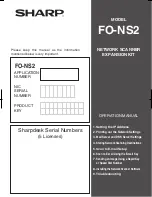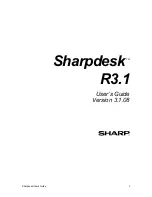
Inbound Customization
224
Integration Guide
The interface table polling program is run by using the system cron task manager.
The cron task, IFACETABLECONSUMER, has an optional property called
EXITCLASS, where you can place the fully qualified name of a Java exit class.
The Java data structure list represents the record from the interface tables, where
the first element is always the action of the message. The remaining elements of
the list are the mapped data structures, with each map representing a row in the
interface table for each message. The keys in the map are the column names and
the values are the corresponding column values. All the column values (Integers,
Date, Float, Double) are converted to their localized string format before they are
set in the map.
The EXITCLASS class must implement the psdi.iface.intertables.IfaceTbExit
interface and the following three methods:
public void beforeQueue(long transid, String extSys, String
ifaceName, List data, Connection conn)
This method is called after the data is pulled from the interface table and
before the data is inserted into one of the inbound queues.
public void afterCommit(long transid, String extSys, String
ifaceName, Connection conn)
This method is called after the data has been inserted to an inbound queue
and deleted from the interface queue table, and the database commit is
done.
public void afterRollback(long transid, String extSys, String
ifaceName, Connection conn)
This method is like the afterCommit method but called if the transaction is
rolled back.
This class can perform the noted processes:
T
Validate data
T
Change external data by changing the IR record to be saved in the system
T
Stop the transaction from being saved in the queue by throwing an
exception
In this case, the transaction remains in the MXIN_INTER_TRANS table
with the error message and is reprocessed.
T
Stop the message from being sent to external system by throwing a
skip_transaction exception
In this case, message the system does not save the message; the message is
removed from the queue.
T
Log the transaction
The user exit that uses the afterCommit or afterRollback method can perform the
following processes:
T
Perform custom processing and cleanup
Summary of Contents for BJ0NJML - Service And Asset Management
Page 12: ...xii Integration Guide ...
Page 14: ...xiv Integration Guide ...
Page 16: ......
Page 31: ...Integration Framework for User Interface Integration Integration Framework Architecture 17 ...
Page 32: ...Integration Framework for User Interface Integration 18 Integration Guide ...
Page 60: ...Synchronous Inbound Integration Processing 46 Integration Guide ...
Page 122: ...Configuring External Systems 108 Integration Guide ...
Page 142: ...Non queue Error Management 128 Integration Guide ...
Page 154: ...Integration Components 140 Integration Guide ...
Page 156: ......
Page 172: ...Writing Custom Handlers 158 Integration Guide ...
Page 176: ...Queue Tables 162 Integration Guide ...
Page 190: ...IBM WebSphere MQ 176 Integration Guide ...
Page 212: ...Inbound Message Receipt 198 Integration Guide ...
Page 226: ...Integration Controls 212 Integration Guide ...
Page 252: ...Predefined External System Modifications 238 Integration Guide ...
Page 263: ...Web Service Queries Integration Queries 249 ...
Page 264: ...Web Service Queries 250 Integration Guide ...
Page 272: ...Integration Web Service Invocations 258 Integration Guide ...
Page 276: ...Multilanguage Attributes 262 Integration Guide ...
Page 293: ...Integration Module Invocation Integration Modules 279 ...
Page 294: ...Integration Module Invocation 280 Integration Guide ...
Page 302: ...Associating a Condition with a Signature Option 288 Integration Guide ...
Page 320: ...Work Order Collaboration Switches 306 Integration Guide ...
Page 324: ...310 Integration Guide ...
















































